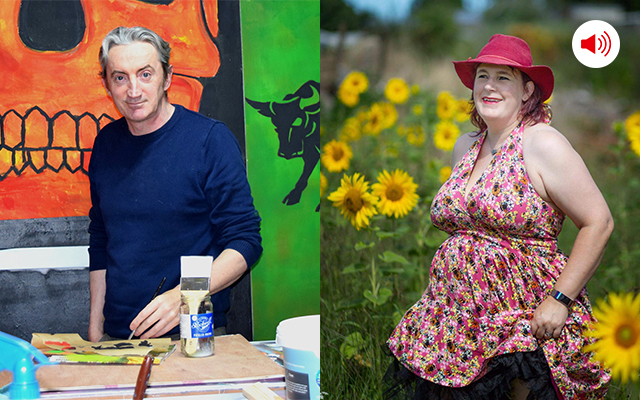
How much do you know about what it’s like to live with a DBS device? In a new podcast episode, sponsored by Abbott, our guests share their perspectives on life after deep brain stimulation surgery
For many people living with Parkinson’s, the idea of undergoing brain surgery to help tackle some of the condition’s symptoms is understandably daunting.
“In the beginning, it was scary to hear stories of an eight-hour operation that you do fully awake,” explains 58-year-old Peter Schielzeth from Germany, who was diagnosed with Parkinson’s seven years ago.
But what impact can this have on daily life and treatment?
In the latest episode of Parkinson’s Life podcast, Peter is joined by UK-based Parkinson’s nurse, Louise Ebenezer, for a discussion about what happens after the device is implanted.
For Peter, who underwent the surgery in 2018, the most noticeable impact has been a reduction in his tremor which, among other things, has helped him and his husband to get a better night’s sleep. “My husband said in bed I was actually quiet, whereas before I always had a tremor,” he explains. “All of a sudden, he’s like ‘Is he still alive?’ – because you don’t see or hear or notice anything anymore. That was the best impact.”
DBS can also help to make medication for the condition more manageable, adds Louise. “The pill burden is huge,” she explains. “But the [medication] timings aren’t quite as crucial when you’re on DBS, so it does help you live your own life. Then you get back to working and doing everything that you want to do.”

Of course, it’s crucial that people considering the surgery are realistic about how DBS can affect symptoms. “Don’t expect everything to go away after the DBS surgery,” says Peter. “It’s just one part of your treatment.”
Louise agrees: “It’s about managing expectations of the individual.”
Managing day-to-day life with a DBS device
Louise says that some of her patients are concerned about how the components of the DBS system, which include an insulated wire and a pacemaker-like device called a neurostimulator, might affect their body image or everyday activities like brushing hair. “The majority [of wires are] just under your clavicle and it’s not noticeable at all,” she says.
There are also factors to consider when it comes to everyday routine. Peter’s device is powered by a rechargeable battery – so making sure it is fully charged, just like “your mobile phone”, is vital. “Once, I forgot to recharge it, I ignored the warning signals, and I woke up in the morning with my arm dancing the cha-cha-cha,” he says. “And that’s an experience you don’t need.”
But, as with other technology, this process easily becomes a habit. “If you do it regularly, you don’t forget,” says Louise. “It’s no different than taking one pill in the morning, is it?”

Sharing the advice for people considering DBS surgery, she says to keep an open mind and stay informed about what deep brain stimulation involves. “Everything we do has risks. So it’s always about weighing the benefits against the risks. As long as you can have that clear in your own mind, then you’re going to do very well.
“Hope is the biggest thing we’ve got with this illness – and to keep on living your life.”
Parkinson’s Europe is sharing this article for information purposes only; it does not represent Parkinson’s Europe’s views and is not an endorsement by Parkinson’s Europe of any particular treatments, therapies or products.


